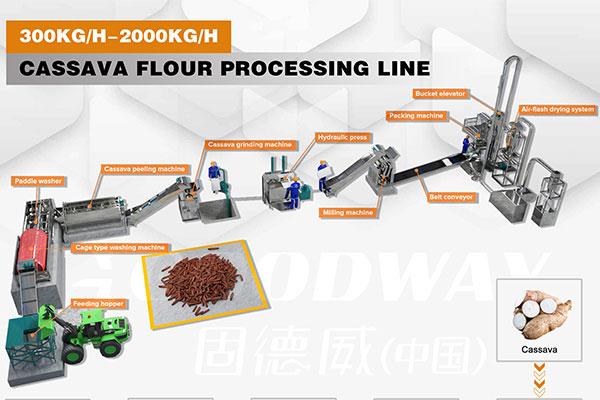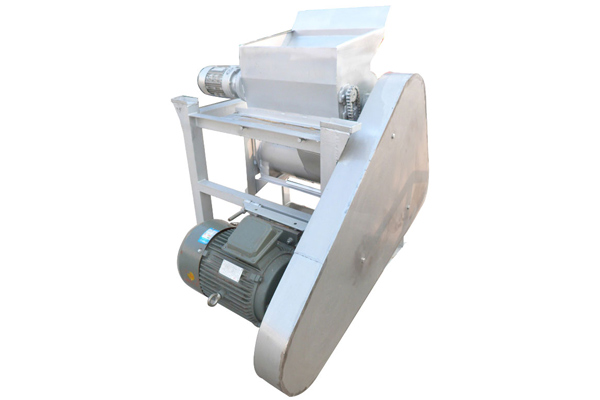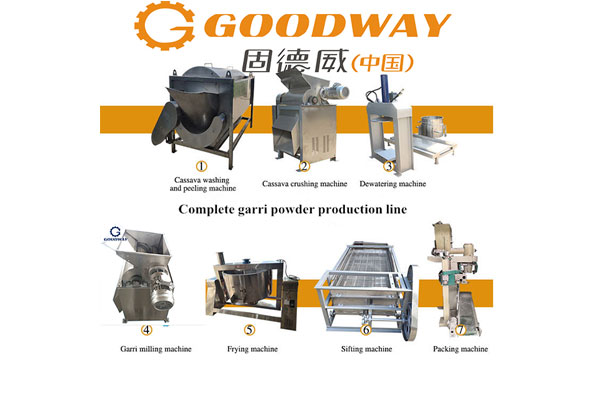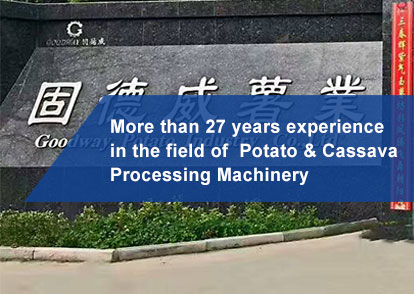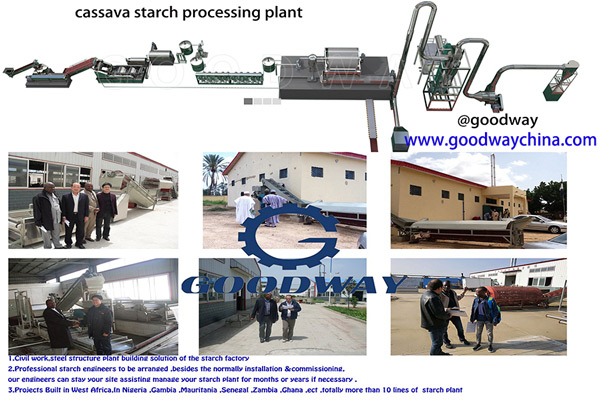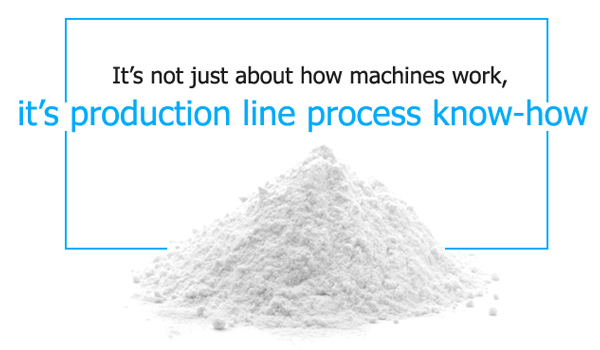Starch is one of the most abundant substances in nature, a renewable and almost unlimited resource. Starch is produced from grain or root crops. It is mainly used as food, but is also readily converted chemically, physically, and biologically into many useful products to date, starch is used to produce such diverse products as food, paper, textiles, adhesives, beverages, confectionery, pharmaceuticals, and building materials.
Cassava starch has many remarkable characteristics, including high paste viscosity, high paste clarity, and high freeze-thaw stability, which are advantageous to many industries.
1. Raw material cleaning
Fresh cassava root is input into the drying cleaner of soil-removing and peeling in which screw guide plate fixed on inner wall of the cylinder cage pushes forward cassava root when the cylinder cage rotates. Cassava roots collide and rub themselves and also against the wall one another to remove soil and peel of under the centrifugal force. After soil-removing and peeling of cassava roots go into the agitation water cleaner.
2. Crushing section
This section adopts hammer crusher which destroys the tissue of cassava and makes the very small granular of starch decompose and depart from the roots. The hammer knives, hammer jaw, teeth ,grill disc and rubbing plate strike, rasp cut and squeeze the continuous fed cassava roots which release starch particles that turn into raw starch milk when mixing with the water as a media in the proportion of 1:1.
The second step of crushing process is applied for full breaking down cassava root tissue which becomes finer granular of starch that separates thoroughly to increase the extraction rate.
The requirement for the first crushing ensures the starch milk to go throughΦ8.0 to 16.0mm pore of basket sieve of centrifuge while the second crushing enables starch milk to flow through Φ1.2~1.4mm pore of basket sieve of centrifuge.After crushing, starch milk is sent into basket sieve of centrifuge in the first stage of separation.
3. First stage separation section
Starch milk after sieving by centrifuge in the first step and the second step is delivered to fine basket sieve in upright continuous centrifuge in which starch milk is further sieved from the more finer cellulose to be pure starch milk that contains fiber less than 0.02% and reaches 5~6 Bé in concentration. Coming out from the fine basket sieve in the centrifuge, starch milk goes to the filtration section while some dilute starch juice returns to the centrifuge in the first step for recycling sieving. A little of un-fully breached down material drained out from the centrifuge in the third step reflows to the crusher in the second step for circulating and cassava residue is carried to pile ground.
4. Sand-removing procedure
Cyclone separator is used in sand removing procedure. Starch milk is pumped into the cyclone separator of which starch milk is shed out from the top and sand is discharged from bottom because of the principle of gravity. After sand-removing, starch milk proceeds to filtration procedure.
5. Filtration procedure
Rotary filter is applied in filtration process in which impurities is further cleaned out to ensure that no block happens to the latter process equipment. Impurities is retained by filtering drum and carried to the bottom of filter by hair brush, then discharged when starch milk is input into the filtering drum. After filtration, starch milk flows out from pipe which connects to the second stage of separation section.
6. Second stage separation section
This stage includes 2 steps in which butterfly separator is provided to divorced insoluble protein and the remaining soluble protein and other impurities from starch milk following to the principle of gravity disparity of water, starch and protein of yellow juice aiming at washing , refining and concentrating of starch milk. Starch milk is 5~6 Bé in concentration for input while 20~22 Bé for output. After 2 steps separation in the second separation section, the concentrated starch milk is fed into dewater procedure.
7. Dewater procedure
Blade discharge centrifuge is served for dewater procedure in which water in the concentrated starch milk is thrown out to facilitate drying. Water content in the wet starch after dehydrated must be lower than 38%. The dewatered wet starch is moved to drying and cooling section.
8.Cassava starch drying and cooling section
Air dryer is installed in the drying and cooling system where the dewatered wet starch is dried. The feeder inputs the wet starch into the starch projetor which casts the wet starch into the drying pipe where the fresh air after being heated by heater mixes with the wet starch which is suspended on hot air flow and finally dried by means of heat-exchange in the process of substance transmission because of the strong back pressure resulting from the pneumatic effect of the blower. The temperature of air flow Is controlled at 130~180℃.
9. Final starch product sieving procedure
Horizontal finishing sieve is laid in the final
starch product sieving procedure where the dried starch is sieved. The fine powder of starch (suitable) can go through the screen of the sieve and drop down to the hopper for packing while the coarse powder of starch, held on by the sieve comes out from another outlet for packing and returns to the whole production process for recycling of dissolving, separation, sieving drying, etc.
10. Packing procedure
Pack the fine powder of starch from the outlet 1of the hopper into bag.
Transport the starch product bag into the storage house.

 EN
EN
 fr
fr  es
es  it
it  pt
pt 